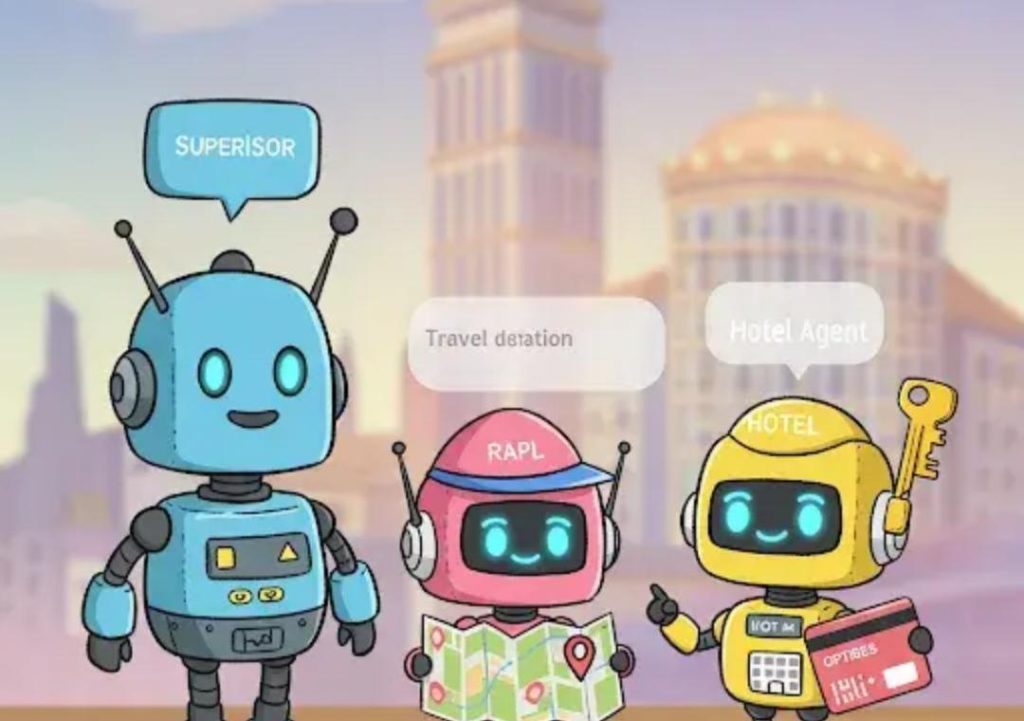
Multi-agent collaboration mimics real team dynamics
In the world of artificial intelligence (AI), we often focus on individual agents that can perform specific tasks. However, in real-world scenarios, teams of humans collaborate to achieve complex goals, leveraging each other’s strengths and expertise to overcome challenges. Similarly, multi-agent systems are revolutionizing the way we think about AI by allowing different agents to specialize, communicate, and collaborate across tasks. This modular setup creates digital workflows that mirror human teamwork, but at machine speed and scale.
The benefits of multi-agent systems
Traditional AI agents are designed to perform a single task, such as data analysis, image recognition, or natural language processing. While these agents can excel in their respective domains, they often struggle with tasks that require a broader range of skills or context. In contrast, multi-agent systems bring together multiple agents with diverse expertise to tackle complex problems.
By collaborating with each other, agents can:
- Specialize in specific tasks: Each agent can focus on a particular task, such as data collection, feature engineering, or model evaluation, allowing for more efficient use of resources.
- Share knowledge and expertise: Agents can exchange information and best practices, enabling them to learn from each other and improve their performance over time.
- Compensate for weaknesses: If one agent is weak in a particular area, another agent can step in to provide support, ensuring that the overall system remains robust and resilient.
- Scale and adapt: Multi-agent systems can be easily scaled up or down depending on the requirements of the task, making them ideal for applications with varying levels of complexity.
Real-world applications of multi-agent systems
Multi-agent systems have numerous applications across various industries, including:
- Research and development: Teams of agents can collaborate to analyze large datasets, identify patterns, and develop new hypotheses, accelerating the research process.
- Validation and testing: Agents can work together to validate and test complex systems, ensuring that they meet the required standards and specifications.
- Reporting and analytics: Multi-agent systems can generate detailed reports and analytics, providing insights that would be difficult or impossible for a single agent to produce.
- Customer service: Agents can work together to provide 24/7 customer support, offering personalized solutions and resolving issues efficiently.
Case studies and examples
Several companies are already leveraging the power of multi-agent systems to drive innovation and improve efficiency. For example:
- IBM’s Watson Health: Watson Health uses a multi-agent system to analyze healthcare data, identify trends, and provide personalized treatment recommendations.
- Google’s Cloud AI Platform: Google’s Cloud AI Platform employs a multi-agent system to automate the development of machine learning models, reducing the time and cost associated with model development.
- Amazon’s Alexa: Amazon’s Alexa is a multi-agent system that integrates with various devices and services to provide a seamless user experience.
The future of multi-agent systems
As AI continues to evolve, we can expect to see even more sophisticated multi-agent systems that can tackle complex problems and drive business growth. Some potential future applications include:
- Autonomous vehicles: Multi-agent systems can be used to develop autonomous vehicles that can navigate complex environments and make decisions in real-time.
- Cybersecurity: Agents can collaborate to detect and respond to cyber threats, providing a more robust and effective defense system.
- Smart cities: Multi-agent systems can be used to manage and optimize urban infrastructure, providing improved public services and quality of life.
Conclusion
In conclusion, multi-agent systems are revolutionizing the way we think about AI by allowing different agents to specialize, communicate, and collaborate across tasks. By leveraging the strengths of individual agents, multi-agent systems can tackle complex problems and drive business growth. Whether you’re looking to accelerate research and development, improve customer service, or optimize business processes, multi-agent systems offer a powerful solution that can help you achieve your goals.
News source:



